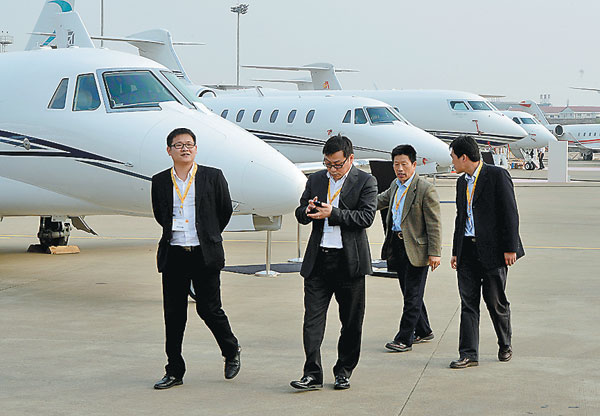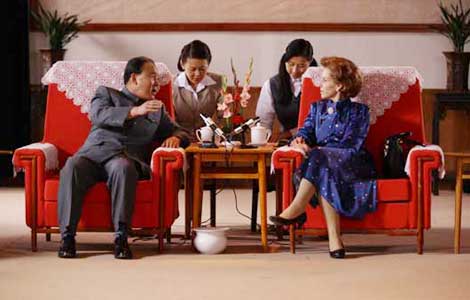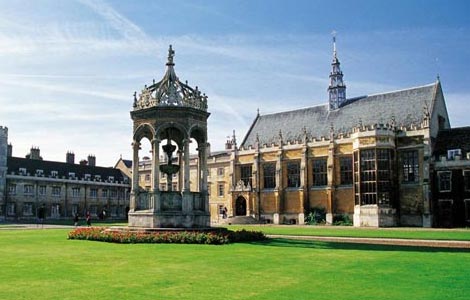Private aviation prepares for takeoff in China
By Yang Yang ( China Daily ) Updated: 2014-08-16 08:33:10
|
Businessmen inspect private executive jets at the Asian Business Aviation Conference and Exhibition. |
"When people buy a private jet, they have no idea where to register it. They have to register it under the name of a company according to the current regulations, but the process is quite complicated and pricey because of the high taxes imposed. If owners want to take a flight, they have to apply for approval from both the People's Liberation Army Air Force and the Civil Aviation Administration of China," she says. "It's as if you've spend millions of yuan on a Ferrari but have to put it in a company compound instead of your own garage, so you're unable to drive it when you want.
"There's also a lack of professional talent that can provide relevant services both in the air and on the ground. There aren't enough airports to form a network that can provide services for private flights, especially long-distance. So, even if the low-level airspace is open to general aviation, do you dare fly your private plane?" she says.
As a result, when owners of unregistered aircraft want to take a flight, they have no choice but do it covertly - a so-called black flight.
Wang says about 60 percent of the more than 3,300 general aviation aircraft in China are unregistered: Black flights threaten both people's safety and national security.
In March and April 2010, three "black flights" took place in Zhejiang province. One, which departed from Jiaxing, a city neighboring Shanghai, was designated as a UFO and caused a number of flights to be delayed at Shanghai Pudong and Hongqiao international airports.
At the end of August 2013, a 5-year-old boy named He Duoduo took the controls of a fixed-wing private plane in the skies above the Beijing Wildlife Park. Although a trainer accompanied the boy, the 35-minute flight sparked criticism because the boy was obviously too young to hold a pilot's license, or even apply for training, and the flight was undoubtedly unlicensed.
Gaining official approval to takeoff from Beijing is a time-consuming process. First, the flight times and destinations are subject to scrutiny from both the Beijing Air Traffic Administration Bureau and the PLA Air Force - and can take three to four days. Second, the meteorological authorities also have to give permission, but obtaining a reply can take as long as 10 days.
|
|
|
|
|
|
|
|























 Raymond Zhou:
Raymond Zhou: Pauline D Loh:
Pauline D Loh: Hot Pot
Hot Pot Eco China
Eco China China Dream
China Dream China Face
China Face





